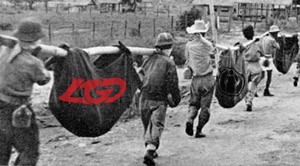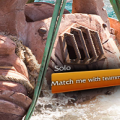
Archaeologists Find Evidence of “Tilt Road”
— October 10, 2015The archaeological and esports worlds were astounded when Riot-sponsored researchers in the Xinjiang Uyghur Autonomous Region of China uncovered evidence of a 2017-year-old land route, once connecting the ancient societies of Europe to Imperial China. Unlike similar transcontinental trading routes, the newly-discovered route was not used to exchange goods and wealth, but was instead a path for Chinese esports professionals to walk home after international failings.
The route, described by contemporaries as the “Tilt Road,” was originally a twisting and intentionally difficult path from Lutetia, the Gallo-Roman city, to Chang’an, the ancient capital of the Chinese Empire. The road was walked by scores of failed esports players, who would endure the jeers of commentators and fans as they undertook the long march.
The route eventually fell into disuse when the Chinese government decided that assigning esport professionals a social credit score of 350 would be a much more painful and effective form of punishment.
“Funny enough, the discovery came as a complete accident,” commented Riot excavator Joshua ‘Jatt’ Leesman. “After the sandbox fiasco, Riot Games was researching innovative new ways to further dig itself into a hole, and that’s when we accidentally found the first tunnels.”
“Riot usually doesn’t do work in archaeology,” added fellow archaeologist Owen Liu. “Constantly unearthing the past is more of a speciality of the Dota community.”
Although the route’s main purpose was for the transport of Chinese esports professionals, it was occasionally used when Korean merchants wished to exchange their own players in European markets. Unfortunately, many of those players were ambushed and kidnapped by nomadic bands of Chinese businessmen.
In later centuries, Western travelers would also use the path to explore Asia. The written accounts of one such explorer, Marco Holo, describes tales of gigantic catfish monsters that could swallow entire teams whole, or of self-sacrificing madmen who would let themselves be damaged by the holy towers for no reason.
Much is still unknown about the nature of the Tilt Road. For instance, historians and analysts alike are still investigating why the Chinese players stopped at Lutetia, and did not travel further to Londinium.
“In general, the rise of intercontinental trading routes increased the dietary variety of the societies that participated, thereby increasing the quality of life of its citizens,” commented esports historian Duncan ‘Thorin’ Mohr. “However, Chinese esports players seem to be the exception, as their diet apparently devolved into animal feed and fecal matter.”
The discovery comes as the most important archaeological breakthrough in the esports world since the discovery of the Bering land bridge, which allowed the peoples of prehistoric Russia to occupy North American Dota 2 servers.
If you like our content, please consider supporting us through the ESEX LoL Patreon.
Tagged with: lol




